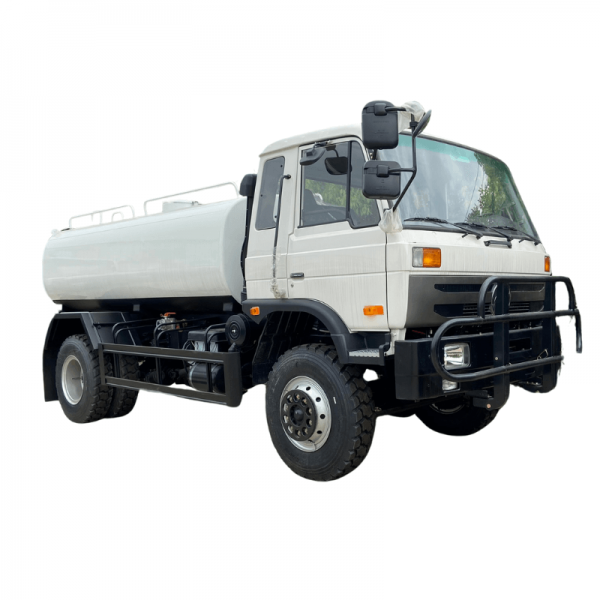The Ultimate Guide to Garbage Compactor Truck Dimensions

Introduction:
Garbage compactor trucks play a crucial role in waste management systems worldwide. These specialized vehicles are designed to collect and compact solid waste efficiently, making the collection and disposal process more cost-effective and environmentally friendly. One of the key factors to consider when choosing a garbage compactor truck is its dimensions. In this comprehensive guide, we will explore the various dimensions of garbage compactor trucks, including length, width, height, and capacity, and discuss how these factors impact their performance and efficiency.
Understanding Garbage Compactor Truck Dimensions:
Garbage compactor trucks come in a variety of sizes and configurations to meet the specific needs of different waste management operations. The dimensions of a compactor truck are crucial in determining its capacity, maneuverability, and suitability for different types of waste collection tasks. Let's delve deeper into the key dimensions of garbage compactor trucks:
1. Length:
The length of a garbage compactor truck is an important factor that determines its overall size and capacity. Longer trucks can typically accommodate larger compactors and have higher waste collection capacities. However, longer trucks may also be less maneuverable in tight spaces and urban environments. The length of a compactor truck can range from around 20 feet for smaller models to over 30 feet for larger, heavy-duty trucks.
2. Width:
The width of a garbage compactor truck is another crucial dimension that impacts its maneuverability and accessibility. The width of a compactor truck is typically determined by the size of the compactor unit and the truck chassis. Wider trucks may have greater stability but can be more challenging to navigate through narrow streets or alleys. The width of a compactor truck can vary from around 7 feet for compact models to over 8 feet for larger trucks.
3. Height:
The height of a garbage compactor truck is an important dimension that determines its clearance and suitability for different types of waste collection tasks. Taller trucks may have greater compaction capacities but can be limited in terms of overhead clearance in urban areas with low-hanging power lines or bridges. The height of a compactor truck can range from around 9 feet for smaller models to over 12 feet for larger, high-capacity trucks.
4. Capacity:
The capacity of a garbage compactor truck refers to the volume of waste it can collect and compact before requiring emptying. The capacity of a compactor truck is typically measured in cubic yards or cubic meters and can vary widely depending on the size and configuration of the compactor unit. Smaller compactor trucks may have capacities of around 10 cubic yards, while larger trucks can have capacities exceeding 30 cubic yards.
Factors Influencing Garbage Compactor Truck Dimensions:
Several factors influence the dimensions of garbage compactor trucks, including the type of waste being collected, the size of the waste collection route, and the operational requirements of the waste management system. Here are some key factors that impact the dimensions of compactor trucks:
1. https://www.heli-truck.com/foton-4ton-recovery-truck/ of Waste:
The type of waste being collected plays a significant role in determining the dimensions of a garbage compactor truck. For example, trucks collecting bulky or heavy waste materials may require larger capacities and more robust compaction units, leading to larger overall dimensions. Waste composition and density also influence the compaction efficiency and capacity of the truck.
2. Operational Environment:
The operational environment in which a garbage compactor truck will be used can also influence its dimensions. Trucks operating in densely populated urban areas may require smaller dimensions to navigate narrow streets and alleys effectively. Conversely, trucks operating in rural or industrial areas may have larger dimensions to accommodate higher waste volumes and larger compaction units.
3. Collection Route:
The size and layout of the waste collection route can impact the dimensions of a garbage compactor truck. Trucks servicing routes with tight turns, low clearance areas, or narrow access points may require smaller dimensions for optimal maneuverability. Understanding the specific requirements of the waste collection route is essential in determining the most suitable truck dimensions.
4. Regulatory Requirements:

Regulatory requirements and safety standards may also dictate the dimensions of garbage compactor trucks. Local regulations regarding vehicle size, weight limits, and clearance restrictions can influence the design and dimensions of compactor trucks to ensure compliance and safe operation on public roads.
Conclusion:
Garbage compactor truck dimensions are critical considerations in the design, selection, and operation of waste management vehicles. Understanding the key dimensions of compactor trucks, including length, width, height, and capacity, is essential in determining the suitability of a truck for specific waste collection tasks and operational environments. By considering factors such as waste type, operational requirements, collection route, and regulatory standards, waste management professionals can choose the right compactor truck dimensions to optimize efficiency, performance, and safety in waste collection and disposal operations.
